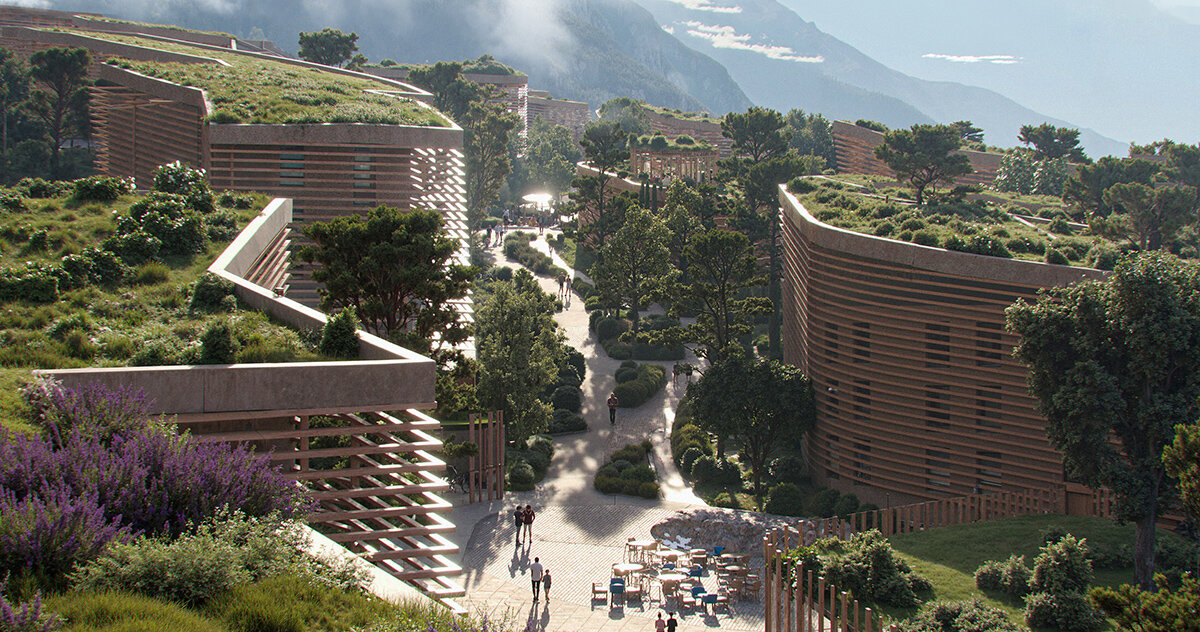Renneria: a new district for the Italian Dolomites
On the outskirts of Bolzano, Italy a new one neighborhood designed by NOAH takes shape. Located in the South Tyrolean countryside, Renneria explores a development model based on agricultural continuity and everyday livability. The 13 hectare site in Pineta di Leifers – named after the Maso Renner farm from the 14th century – embodies respect for history and contemporary standards.
The project, promoted by the Gazzini real estate group, transforms a former agricultural area bordering existing settlements and infrastructure. It offers a thoughtful response to one of the region's most pressing challenges: the need for sustainable housing growth.
'Due to its location, Renneria is ideal for housing a new district' explain Luca and Matteo Gazzini. 'It borders on a settlement, a craftsmen's quarter and an arterial road and is already part of an urbanized structure. Renneria rounds off this development harmoniously.'
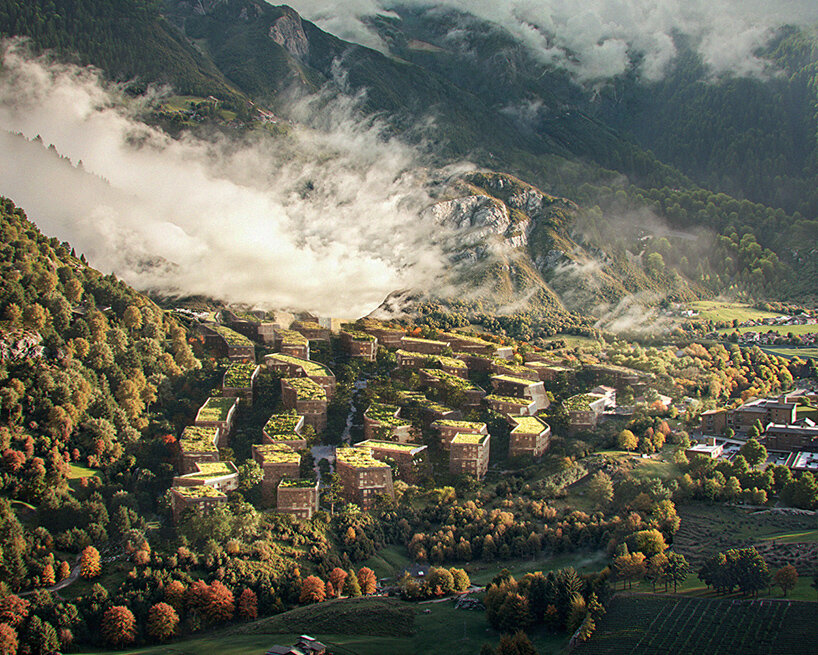
Visualizations © Cosmoscube (unless otherwise stated)
noa is planning a compact village in the mountains
NOA's Renneria master plan envisages around 800 residential units in a system that integrates housing, workplaces, education and leisure. The ArchitectsThe master plan reflects the studio's belief in functional proximity – a model where services are within reach and transportation is carried out by walking, cycling or public transport. Streets become linear gardens, courtyards encourage interaction and the organization mimics a compact village.
'Four words guided our vision: housing, culture, community and collaboration' says Lukas Rungger, founder and project architect of NOA. 'Housing because we offer diverse and integrative housing typologies. Culturally, because new institutions revitalize the intellectual life of the district. Communal because Renneria remains the size of a village. And collaborative, with urban gardens at the heart of this participatory dimension.'
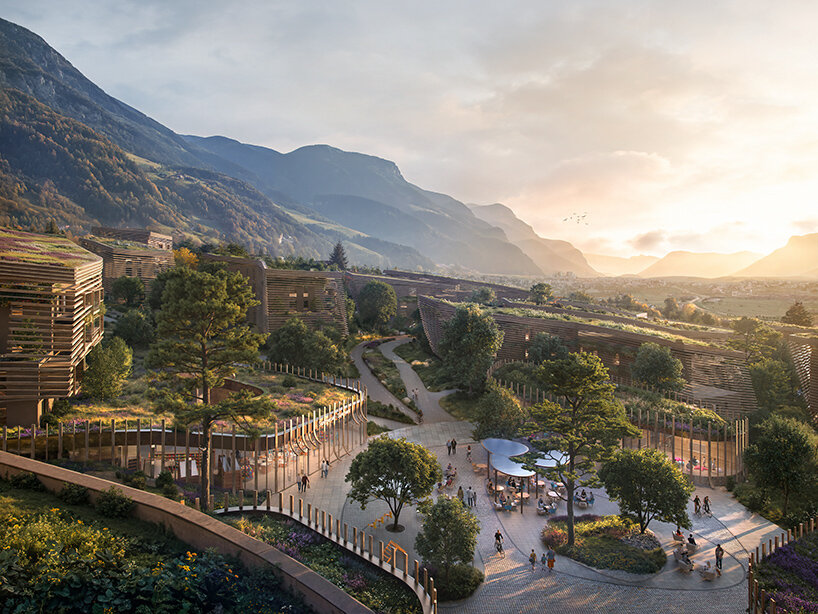
NOA presents Renneria, a new neighborhood for the Dolomites
an agriculture-driven master plan
NOA's Renneria Master Plan focuses on agriculture. Productive landscapes such as urban gardens, orchards and green roofs expand Maso Renner's legacy while shaping new forms of social life. They function as local food systems and educational spaces where people can come together.
'Renneria will house a unique agricultural school, a true open-air laboratory' Add the Gazzini brothers. 'The 70,000 square meters of green spaces, fruit trees, herbs and biotopes become an integral part of the educational path and transform the district into a distributed classroom.'
This green unfolds through different topographies. To the west, a linear park buffers the traffic corridor while providing a shaded pedestrian and cycle path. Green corridors radiate outwards and connect to the panoramic viewpoint Seit, where a new viewpoint will frame the view over the valley and the Dolomites.
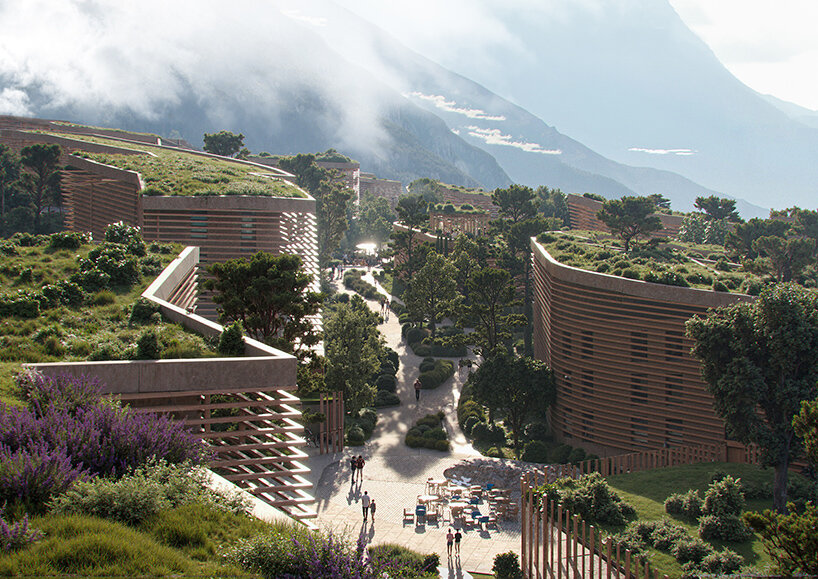
The 13 hectare site in Laives expands the outskirts of Bolzano to include a mixed-use development
Public life in the district is organized in three squares. 'They are designed for social interaction, safety and urban vibrancy' explains Andrea Dal Negro, architect at NOA. 'With fountains, trees and paving variations, these spaces function as outdoor living rooms that are active all year round.'
Each square has its own character: the southern one for markets, the central one for cafes and shops and the northern one for education, with student residences and workshops linked to play and learning.
Mobility follows a clear hierarchy. A ring road borders the site, and there is an underground car park in important places. Inside, the streets emphasize green spaces and slow traffic. Pedestrian and cycle paths define the internal grid, reinforced by three kilometers of cycle paths. Of course, the absence of traffic improves air quality and reduces noise pollution.
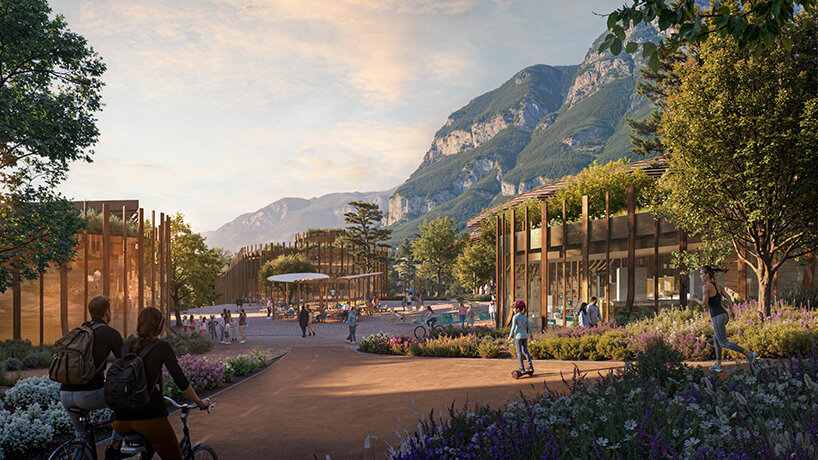
NOA's pedestrian-friendly neighborhood combines living, work, educational and recreational spaces
Architecturally, Renneria develops from the site itself. NOA's concept of “extrude the landscape' transforms contour lines into built form. The buildings rise gently towards the slope and thus mediate between the city and the surrounding landscape.
Facades are covered Wood Slats – horizontal for residential buildings, vertical for public buildings – create a calm interplay of texture and rhythm under the Dolomite light. Green roofs expand this dialogue and act as community gardens and energy buffers.
'The height of the buildings varies to preserve panoramic views and maximize natural light and ventilation.' says Dal Negro. 'Public buildings on sloping terrain have entrances on multiple levels, creating layered, attractive spaces.'
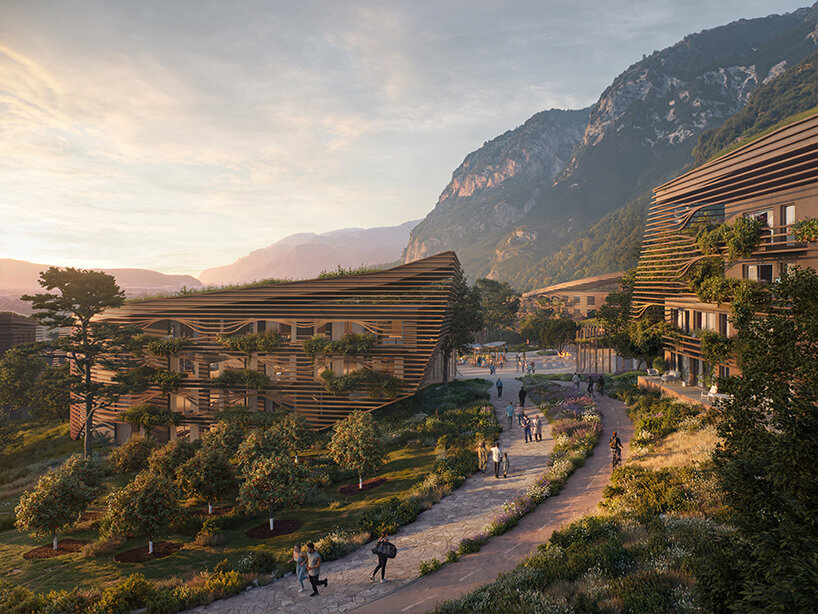
Public squares, fountains and green corridors define a pedestrian-oriented master plan
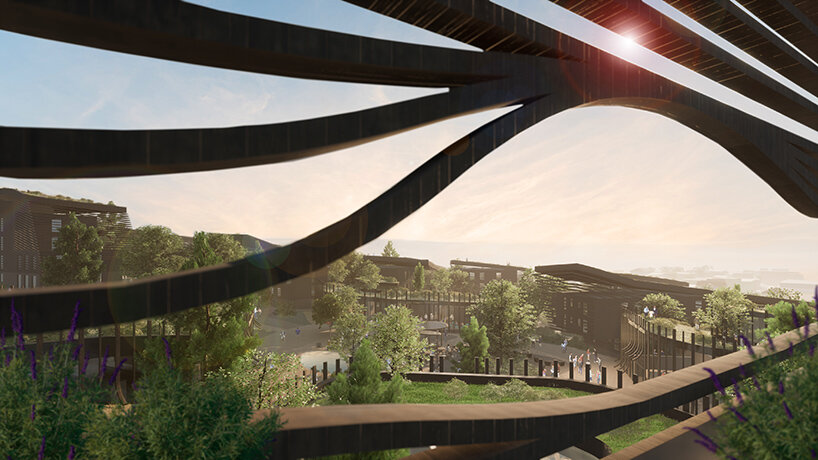
Wooden facades and green roofs merge the architecture with the landscape Image © NOA
